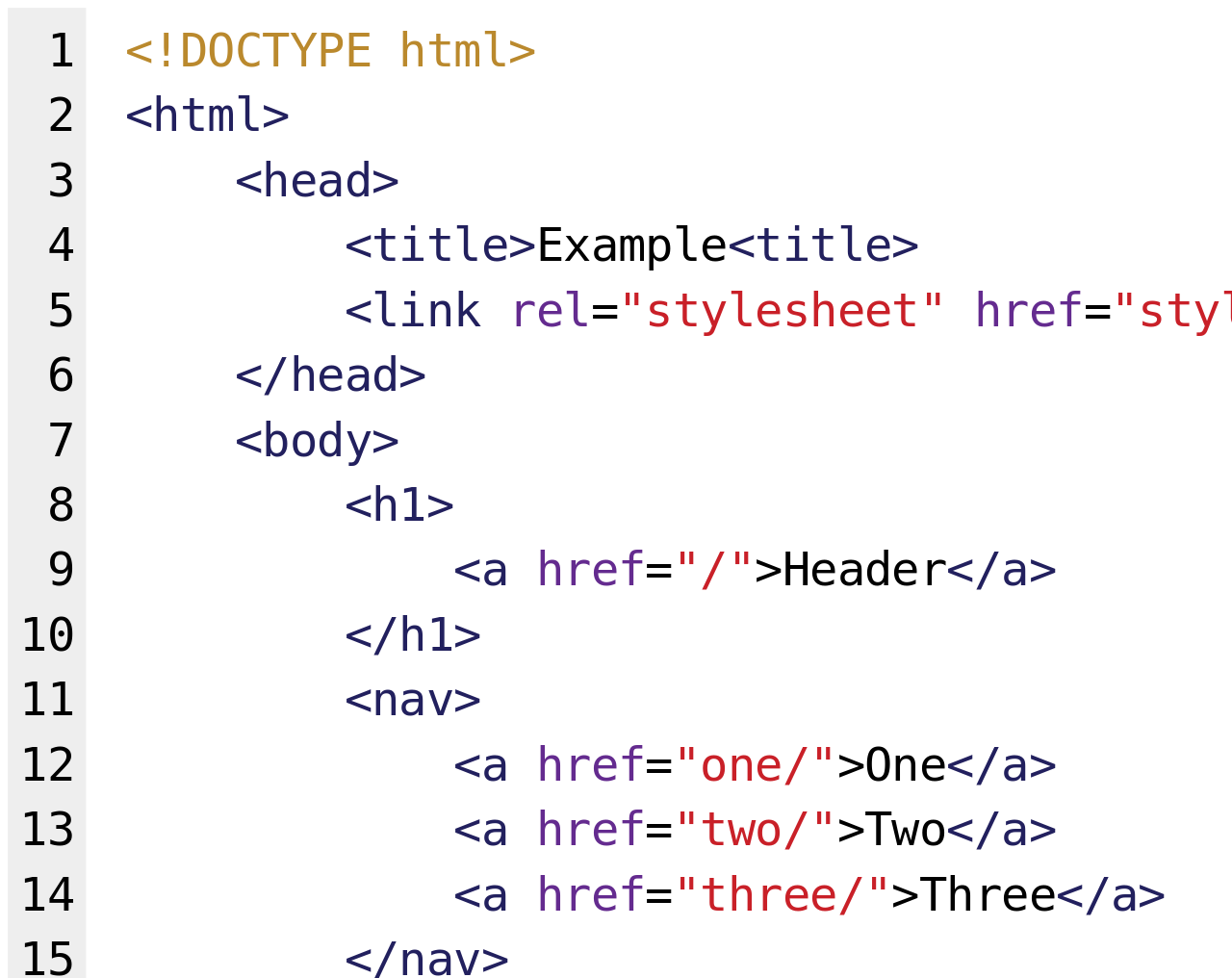HTML, or HyperText Markup Language, is the standard markup language for creating and designing web pages. It is the backbone of web development and is used to structure content on the internet. HTML consists of a series of elements, which are represented by tags. Each tag serves a specific purpose and defines different parts of a web page. Let's delve into HTML in more detail:

Document Structure:
HTML documents start with a document type declaration (
<!DOCTYPE html>), which specifies the version of HTML being used (usually HTML5).The entire HTML document is enclosed within the
<html>tag.The document is typically divided into two main sections: the
<head>and the<body>.
<!DOCTYPE html>
<html>
<head>
<!-- Metadata, such as character set, title, styles, and scripts -->
<title>Page Title</title>
</head>
<body>
<!-- Content of the web page -->
</body>
</html>
Head Section:
The
<head>section contains meta-information about the HTML document, such as the title of the page, character set, links to stylesheets, and scripts.The
<title>tag defines the title of the HTML document, which is displayed in the browser's title bar or tab.
Body Section:
The
<body>section contains the actual content of the web page, such as text, images, links, forms, and other elements.Elements within the
<body>section are what users see and interact with when they visit a web page.
HTML Elements:
HTML elements are composed of opening tags (
<tag>) and closing tags (</tag>), with content sandwiched in between.Some tags are self-closing and don't have a closing tag (e.g.,
<img>).
<tag>Content goes here</tag>
Attributes:
HTML tags can have attributes that provide additional information about the element.
Attributes are added to the opening tag and typically come in name-value pairs.
<tag attribute="value">Content</tag>
Common HTML Elements:
<h1>to<h6>: Heading tags for different levels of headings.<p>: Paragraph tag.<a>: Anchor tag for creating hyperlinks.<img>: Image tag.<ul>and<ol>: Unordered and ordered list tags.<li>: List item tag.<div>and<span>: Division and inline division tags for layout and styling.
HTML Forms:
<form>: Container for form elements.<input>: Allows user input and supports various types (text, password, checkbox, radio, etc.).<textarea>: Multi-line text input.<select>: Dropdown list.
Comments:
Comments in HTML are written between
<!--and-->.Comments are ignored by browsers and are useful for leaving notes in the code.
<!-- This is a comment -->
HTML5 Semantic Elements:
- HTML5 introduces semantic elements that provide meaning to the structure of a page, such as
<header>,<nav>,<section>,<article>,<footer>, etc.
- HTML5 introduces semantic elements that provide meaning to the structure of a page, such as
<header>
<!-- Header content goes here -->
</header>
<section>
<!-- Section content goes here -->
</section>
<footer>
<!-- Footer content goes here -->
</footer>
This is just a basic overview of HTML. As you delve deeper into web development, you'll encounter more advanced features and techniques, including CSS for styling and JavaScript for interactivity.
Certainly, let's explore HTML in more detail by looking at various elements and their attributes.
1. Text Elements:
Heading Elements (<h1> to <h6>):
<h1>This is a Heading 1</h1>
<h2>This is a Heading 2</h2>
<!-- ... -->
<h6>This is a Heading 6</h6>
Paragraph Element (<p>):
<p>This is a paragraph of text. It can contain <strong>strong</strong> or <em>emphasized</em> text.</p>
Line Break (<br>):
<p>This is the first line.<br>This is the second line.</p>
Horizontal Line (<hr>):
<p>This is above the horizontal line.</p>
<hr>
<p>This is below the horizontal line.</p>
2. Lists:
Unordered List (<ul>) and List Item (<li>):
<ul>
<li>Item 1</li>
<li>Item 2</li>
<li>Item 3</li>
</ul>
Ordered List (<ol>):
<ol>
<li>First item</li>
<li>Second item</li>
<li>Third item</li>
</ol>
3. Links (<a>):
Basic Link:
It is a link to move to another page or website.
<a href="https://www.example.com">Visit Example.com</a>

Link with Target Attribute:
<a href="https://www.example.com" target="_blank">Open in a new tab</a>
4. Images (<img>):
Basic Image:
it is an image attribute to the image on the web page.
<img src="image.jpg" alt="Description of the image">
Image with Size and Alignment:
<img src="image.jpg" alt="Description" width="300" height="200" style="float:right;">
5. Forms:
Form and Input Elements:
<form action="/submit" method="post">
<label for="username">Username:</label>
<input type="text" id="username" name="username" required>
<label for="password">Password:</label>
<input type="password" id="password" name="password" required>
<input type="submit" value="Submit">
</form>
Textarea:
<label for="message">Your Message:</label>
<textarea id="message" name="message" rows="4" cols="50"></textarea>
Dropdown List (<select>) and Options (<option>):
<label for="cars">Choose a car:</label>
<select id="cars" name="cars">
<option value="volvo">Volvo</option>
<option value="saab">Saab</option>
<option value="mercedes">Mercedes</option>
<option value="audi">Audi</option>
</select>
6. Semantic Elements:
Header, Section, Article, Footer:
<header>
<h1>Website Header</h1>
</header>
<section>
<article>
<h2>Article Title</h2>
<p>Article content goes here.</p>
</article>
</section>
<footer>
<p>Contact us at info@example.com</p>
</footer>
7. Comments:
<!-- This is a comment. Comments are not displayed in the browser. -->
This is a more detailed look at HTML elements and their usage. Understanding these elements will give you a solid foundation for creating structured and semantically meaningful web pages. Keep in mind that HTML is often used in conjunction with CSS for styling and JavaScript for interactivity to create fully functional and visually appealing websites.
